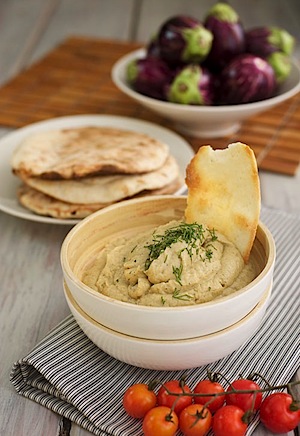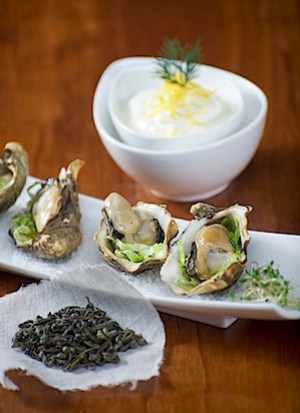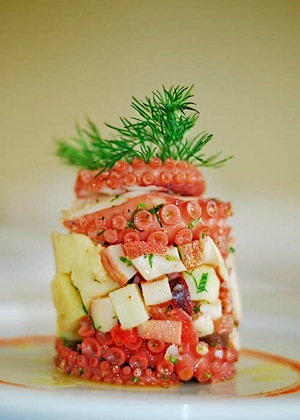Introduction
A Guest Post by Dario Milano of Food Pixels.
In our daily lives, food holds a prominent place. It surrounds us constantly, whether it’s on our plates, in magazines, on TV, or even on computer screens. Food is not just a means of sustenance; it is an integral part of our existence. We are passionate about what we eat, and our dietary choices reflect our lifestyle, beliefs, and personal preferences.
Dario Milano, a highly skilled food photographer, shares his expertise and love for capturing mouth-watering food images. With 15 years of experience as a qualified chef, he brings a unique perspective to his craft. In this article, Dario provides ten invaluable tips for taking captivating photographs of food that will surely make your taste buds tingle.
The Importance of Food in Our Lives
Food is not just nourishment for our bodies; it shapes our identity and culture. It is a subject of conversation, a source of inspiration, and a catalyst for creativity. Our diet speaks volumes about who we are and the choices we make. Dario emphasizes the significance of understanding the connection between food and our lives as we embark on the journey of food photography.
Tip 1: Choose Fresh and Locally Grown Ingredients
To capture the essence of food in a photograph, it’s crucial to start with the finest ingredients. Freshness and quality play a fundamental role in the visual appeal of a dish. Dario advises against over-manipulating the food and suggests keeping it simple. By allowing the food to speak for itself, you can showcase its natural beauty and tell a compelling visual story.
He encourages photographers to step away from the common and explore lesser-known ingredients. While strawberries may be a popular subject, why not try photographing custard apples or other unique produce? By exploring the undiscovered, you open the door to capturing new and exciting images.
Tip 2: Let the Food Guide Your Approach
When confronted with a dish, Dario recommends taking a moment to observe and analyze the food. What aspect of it caught your attention? Is it the shape, texture, or vibrant color? By identifying the dominant characteristic, you can adapt your photography approach accordingly.
For instance, if the texture of the food is the most striking feature, you may opt for a soft light to accentuate it. On the other hand, if the dish boasts vibrant colors, you might choose to use contrast to emphasize its visual impact. Allowing the food to dictate your artistic decisions will result in dynamic photographs that capture its true essence.
Tip 3: Complementary Props and Backgrounds
While the food is the star of the show, strategic selection of props and backgrounds can enhance its visual appeal. Dario advises opting for props that harmonize with the food without overpowering it. A balanced composition ensures that the subject remains the focal point while providing context or adding visual interest.
When choosing backgrounds, consider the overall aesthetic you want to achieve. Backgrounds with contrasting colors or textures can create visual tension and make the food pop. Strike a balance between the food and its surroundings, allowing them to complement each other harmoniously.
Tip 4: Embrace Experimentation
In the world of food photography, sometimes the best shots come from unexpected angles or compositions. Dario encourages photographers to explore different perspectives and experiment with their vision. While it’s essential to capture the shot you had in mind initially, don’t be afraid to switch camera angles and deviate from your preconceived notions.
By embracing experimentation, you open yourself up to surprising and captivating results. Unanticipated perspectives can inject a sense of freshness and originality into your photographs, making them stand out from the crowd.
Tip 5: The Importance of a Tripod
When it comes to achieving sharp and clear images, using a tripod is paramount. Dario emphasizes the significance of stability and the role it plays in capturing professional-looking food photographs. A tripod eliminates camera shake and allows for longer exposures, particularly beneficial in low light environments such as restaurants or bars.
With a tripod, you can achieve sharper images and fine-tune your composition with precision. It offers greater control over the final result and can significantly elevate the quality of your food photography.
Tip 6: Mastering White Balance
White balance is a vital element in food photography that can strongly influence the overall feel and atmosphere of an image. Dario advises photographers to familiarize themselves with their camera’s white balance controls and utilize them to their advantage.
Understanding white balance enables you to manipulate temperature and color tones to create the desired mood in your photographs. Whether you want to convey warmth and intimacy or maintain accurate colors, adjusting white balance allows for endless creative possibilities.
Dario also suggests exploring different white balance options to experiment with the effect on the overall image. This control can be a powerful tool in shaping the visual narrative of your food photographs.
Tip 7: Mastering Depth of Field
In food photography, shallow depth of field is often employed to isolate the main subject and draw the viewer’s attention directly to it. Dario advises photographers to experiment with depth of field settings to create captivating images.
By selectively focusing on the main subject while allowing the background to blur, you can create a visually striking composition. This technique adds a sense of depth and elegance to the photograph, enhancing its overall aesthetic appeal.
Tip 8: Recommended Lens for Food Photography
Dario highly recommends using a 50mm f/1.8 lens for food photography. This lens is versatile, affordable, and delivers exceptional image quality. Its fast aperture allows for beautiful background blur and maximizes the potential for artistic exploration.
With the 50mm lens, you can capture the fine details of the food while keeping the overall composition visually pleasing. It is an indispensable tool for any food photographer, allowing for creative expression and capturing stunning imagery.
Tip 9: Achieving Perfection In-Camera
While post-processing can be a useful tool for enhancing images, Dario advises photographers to strive for perfection in-camera. Taking the time to get the shot right from the start reduces the need for extensive editing later.
By paying careful attention to composition, lighting, and other elements during the photoshoot, you can significantly minimize the amount of post-processing required. This approach ensures that your images retain a natural and authentic feel while saving you valuable time in the editing process.
Tip 10: Embrace Reference Shots and Seek Inspiration
To improve your food photography skills, Dario encourages photographers to take lots of reference shots. Document your lighting setups, backgrounds, and props to recreate successful setups in the future.
Additionally, seeking inspiration from others and inviting feedback can provide valuable insights and help you refine your craft. By analyzing your own mistakes and learning from others, you can continuously grow as a food photographer and expand your creative repertoire.
Conclusion
Dario Milano’s expertise and passion for both food and photography shine through in his ten invaluable tips for capturing tantalizing food images. By embracing fresh ingredients, allowing the food to guide the photography, and exploring different techniques, you can elevate your food photography to new heights.
Remember, food is not just an object to be photographed; it tells a story and deserves to be showcased in its finest form. With Dario’s tips and your own dedication and creativity, you can create stunning photographs that will enthrall viewers and leave them craving the very dishes you capture.
Ah… and one final piece of advice: don’t forget to enjoy the props – give them a taste after the photoshoot!
For more food photography tips, visit this link.
Check out more of Dario Milano’s exceptional work at Food Pixels.
The article is compiled and compiled by tipcamera.com






